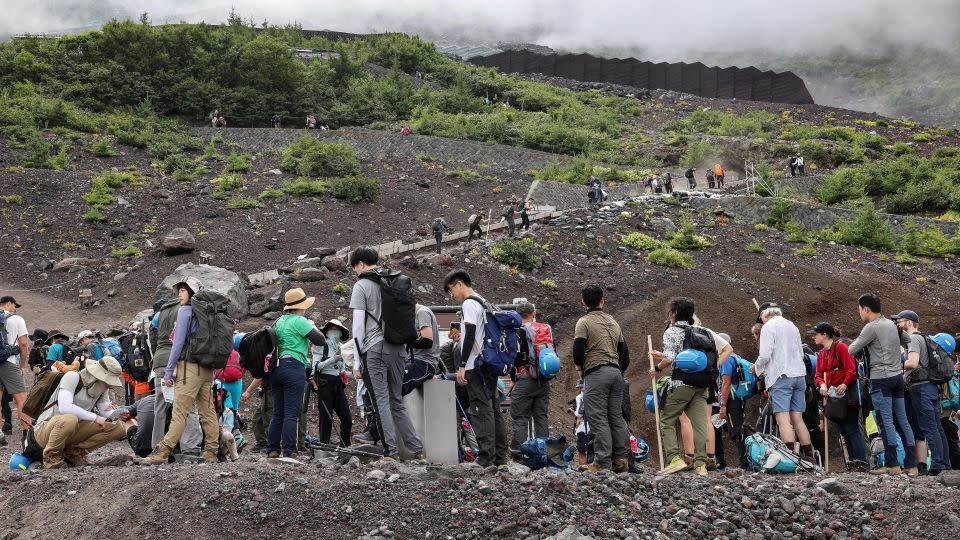Japan’s Mount Fuji implements tourist tax in response to overcrowding concerns
Mount Fuji, a UNESCO World Heritage site and an icon of Japan, has put new regulations in place for climbers amid concerns about overcrowding.
Beginning July 1, climbers must pay 2,000 yen ($12.40) per person, with a daily maximum of 4,000 climbers per day.
“By strongly promoting comprehensive safety measures for climbing Mount Fuji, we will ensure that Mount Fuji, a treasure of the world, is passed on to future generations,” said Koutaro Nagasaki, governor of Yamanashi Prefecture, when announcing the new regulations earlier this year.
“In order to revive traditional mountain climbing from the foot of Mount Fuji, we will gain a detailed understanding of the Fuji-ko and Oshi culture that supported Mount Fuji worship. We look to link these cultures to this mountain climbing, as it is rooted in the cultural values of the religion.”
Fuji-ko is a religion specific to the mountain.
Human traffic jams, foothills littered with garbage and inappropriately attired hikers – some attempting the ascent in sandals - are among the issues plaguing the popular Japanese site.
In addition, there will be new guides who manage safety on and around the trails. They will inform climbers when they’re violating etiquette on the mountain, such as sleeping by the side of the trail, starting a fire or wearing unsuitable clothing.

According to prefectural data, five million people hiked Mount Fuji in 2019, a rise of three million from 2012.
“Overtourism – and all the subsequent consequences like rubbish, rising CO2 emissions and reckless hikers – is the biggest problem facing Mount Fuji,” Masatake Izumi, a Yamanashi prefectural government official, told CNN Travel last year.
In 2023, a volunteer named Tomoyo Takahashi told CNN she would ask visitors to voluntarily contribute 1,000 yen ($6.20) toward maintaining the mountain.
“Not everyone pays the 1,000 yen, and it makes me sad. There should be a mandatory entrance fee that’s much much higher so only visitors who truly appreciate Mount Fuji’s heritage come,” she said at the time.
Now, Takahashi will get her wish.
The new rules, though, only apply in Yamanashi prefecture, which is where the more popular hiking trails are. Fuji is also located in Shizuoka prefecture, which has not yet implemented any taxes or visitor limits. Governor Nagasaki told reporters that he and the governor of Shizuoka would meet at the end of the climbing season to compare notes.
Japan’s tourism headaches
Overtourism has become a bigger issue in Japan since the country reopened following the pandemic.
In Kyoto, locals in the historic Gion quarter have expressed their concern with tourists who flock there to photograph and sometimes harass the geisha who live and work there, earning the nickname “geisha paparazzi.”
While the city has put up signs and placards asking visitors not to photograph geisha, some locals told CNN Travel that it wasn’t enough. One suggestion offered by the neighborhood council is issuing fines or tickets.
And the town of Hatsukaichi, in Hiroshima prefecture in southwestern Japan, has been affected too. The small town is home to the famous orange “floating shrine” torii gate, which is part of a 1,400-year-old Shinto complex.
In October 2023, the town began charging 100 yen (62 cents) per visitor to the shrine. The money from the “tourist tax” goes toward maintaining the site and its infrastructure.
Editor’s Note: This story was originally published in March 2024 and has been updated. CNN’s Hanako Montgomery contributed reporting.
For more CNN news and newsletters create an account at CNN.com

 Yahoo News
Yahoo News 
